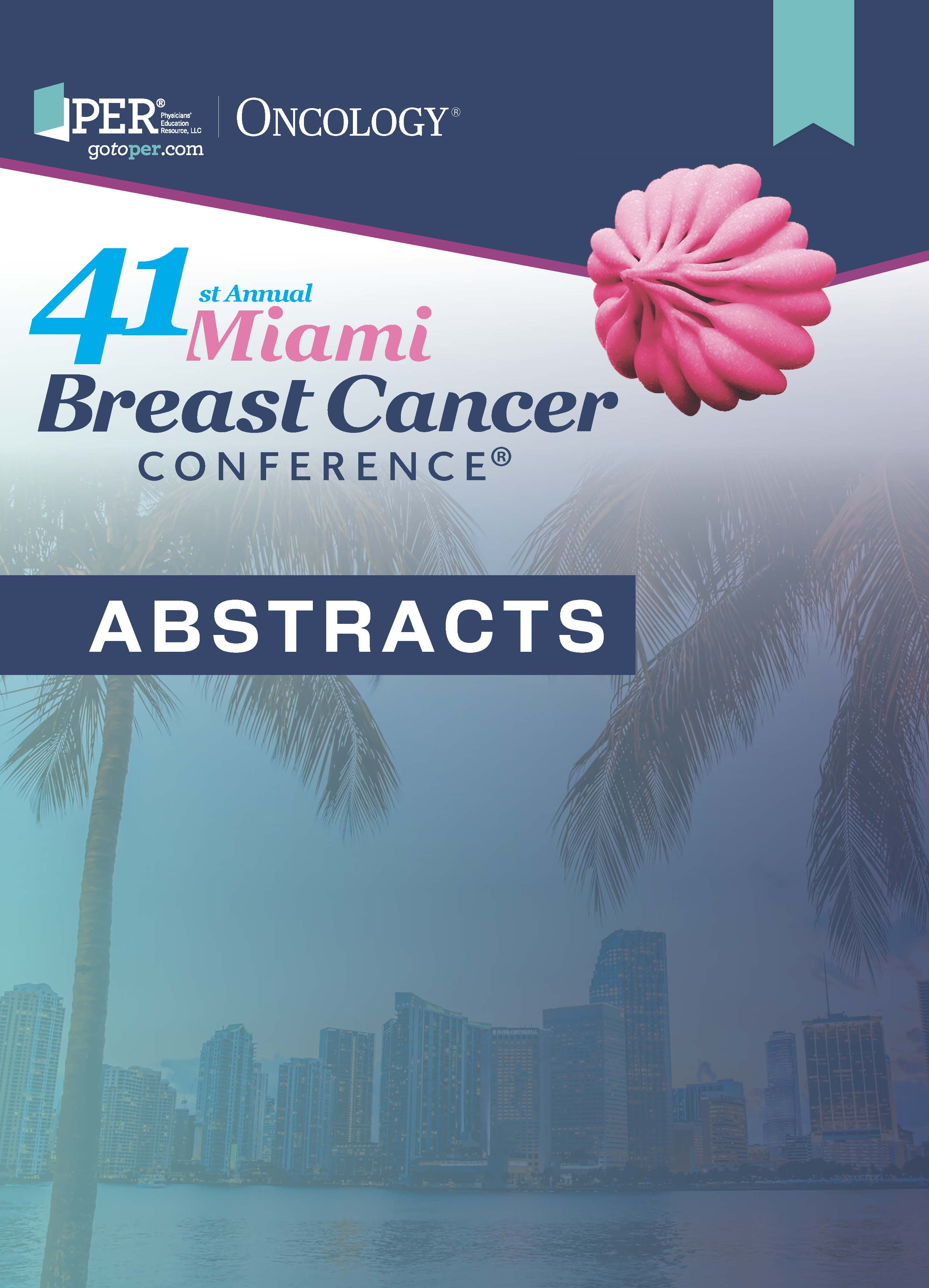31 Adjuvant Abemaciclib Plus Endocrine Therapy for HR+, HER2–, High-Risk Early Breast Cancer: Results From a Preplanned MonarchE Overall Survival Interim Analysis, Including 5-Year Efficacy Outcomes
31 Adjuvant Abemaciclib Plus Endocrine Therapy for HR+, HER2–, High-Risk Early Breast Cancer: Results From a Preplanned MonarchE Overall Survival Interim Analysis, Including 5-Year Efficacy Outcomes

Background
Two years of adjuvant abemaciclib combined with endocrine therapy (ET) resulted in significant improvement in invasive disease-free survival (iDFS) and distant relapse-free survival (DRFS) that persisted beyond the 2-year treatment period in patients with hormone receptor-positive (HR+), HER2-negative (HER2–), node-positive, high-risk, early breast cancer. Here, we report 5-year efficacy results from a prespecified overall survival (OS) interim analysis.
Methods
Patients were randomly assigned 1:1 to receive ET for at least 5 years with or without abemaciclib for 2 years (treatment period). High-risk early breast cancer was defined as either at least 4 positive axillary lymph nodes (ALN) or 1 to 3 ALN with grade 3 disease and/or tumor 5 cm or larger (cohort 1). A smaller group of patients were enrolled with 1 to 3 positive ALN and central Ki67 of 20% or greater (cohort 2). The intent-to-treat (ITT) population consisted of cohort 1 (5120 patients) and cohort 2 (517 patients). OS in the ITT population was tested for statistical significance in the gated strategy. Hazard ratios were estimated using Cox proportional hazard model.
Results
In the ITT population, with a median follow-up of 54 months, the benefit of abemaciclib was sustained with a hazard ratio of 0.680 (95% CI; 0.599-0.772) for iDFS and 0.675 (95% CI; 0.588-0.774) for DRFS. This persistence of abemaciclib benefit translated to continued separation of the Kaplan-Meier curves resulting in a 5-year absolute improvement in iDFS and DRFS rates of 7.6% and 6.7%, respectively, compared with iDFS and DRFS rates of 6.0% and 5.3% at 4 years and 4.8% and 4.1% at 3 years. Treatment benefit in cohort 1 was consistent with ITT. No new safety signals were observed. There continued to be fewer deaths in the abemaciclib plus ET arm compared with the ET arm (208 vs 234; HR, 0.903; P = .284); statistical significance was not met.
Conclusions
At the pivotal 5-year mark for adjuvant EBC trials, abemaciclib plus ET continued to reduce the riskof developing invasive and distant disease recurrence well beyond the completion of treatment. The increasing absolute improvement at 5 years is consistent with a carryover effect and further supports the use of abemaciclib in patients with high-risk early breast cancer. OS data are evolving in favor of the abemaciclib arm, and follow-up continues.

Newsletter
Stay up to date on recent advances in the multidisciplinary approach to cancer.
Artificial Intelligence in Cancer Care: Addressing Challenges and Health Equity
Artificial intelligence may mitigate overdiagnosis and unnecessary treatments in cancer cancer care by integrating with precision medicine.